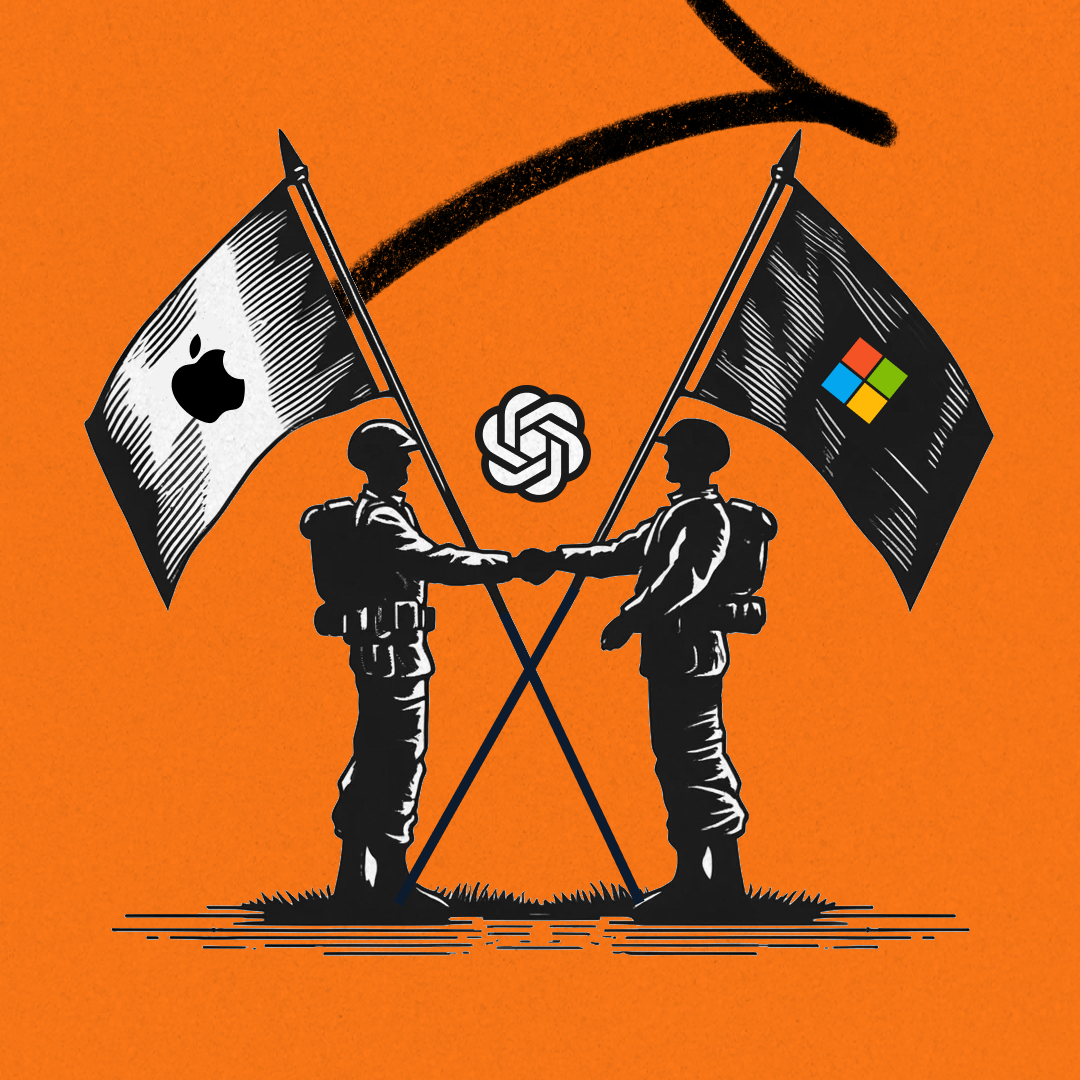
Apple Embraces the Enemy
What its unlikely AI alliance with OpenAI and Microsoft means
June 12, 2024
Was this newsletter forwarded to you? Sign up to get it in your inbox.
When it comes to the software bundled into their operating systems, Microsoft and Apple are usually like oil and water.Microsoft had Office, Apple had iWork. Microsoft had Internet Explorer, Apple had Safari. Microsoft had Windows Media Player, Apple had iTunes.
Always built in-house, always viciously competing to differentiate with their biggest rival.
Now, though, Microsoft has ChatGPT. And after yesterday’s flurry of WWDC announcements, Apple has…ChatGPT. When Apple’s newly beefed-up Siri gets a question that it can’t answer, it can call in ChatGPT for backup—no installation required.
It’s kind of crazy to see Apple integrate, by default, a mission-critical software service that is so closely allied with Microsoft and run on its cloud service. (There is some precedent. Twenty-five years ago, Apple bundled Microsoft’s Internet Explorer into Mac OS for a time—but only to save the company from potential financial ruin at the beginning of Steve Jobs’s second tour of duty as CEO.)
So, how did this arrangement happen?
Paul Graham famously remarked about OpenAI CEO Sam Altman’s dealmaking, “You could parachute him into an island full of cannibals and come back in five years and he'd be the king.”
In this case, it looks like Altman parachuted into a long-running war between two cannibal kings and turned them—through a very complicated set of deals—into reluctant partners. It’s impressive.
Who will win the race, Apple or Microsoft? Or will Sam eventually be the king?
Power moves
While ChatGPT will be integrated into iOS devices, Apple also introduced a full suite of what it calls Apple Intelligence features that boost Siri’s capabilities. Siri can now understand natural speech instead of just short commands, it has more context on who you are, and it can even find and fill out documents for you. ChatGPT is positioned as the backup option in case Siri fails.
It’s an interesting pattern—local on-device AI with cloud fallback—that both Microsoft and Apple have adopted. Yes, both companies are integrating OpenAI technology in various ways. Microsoft’s integration is very deep, while Apple outsources the queries it doesn’t have confidence it can correctly answer to ChatGPT (happily outsourcing that risk to OpenAI).
But both tech giants are also paying significant attention to processing LLM requests on-device using their own proprietary software and hardware, and only resorting to OpenAI’s cloud-based models for more complicated requests that the local devices can’t handle.
On the one hand, this was fairly predictable. In December 2022, I wrote that power would collect in four layers in the AI ecosystem:
- The operating system layer
- The browser layer
- The layer of models that are willing to return risky results to users
- The copyright layer
After WWDC, you can see why power will collect at the operating system layer.
Find Out What
Comes Next in Tech.
Start your free trial.
New ideas to help you build the future—in your inbox, every day. Trusted by over 75,000 readers.
SubscribeAlready have an account? Sign in
What's included?
-
Unlimited access to our daily essays by Dan Shipper, Evan Armstrong, and a roster of the best tech writers on the internet
-
Full access to an archive of hundreds of in-depth articles
-
-
Priority access and subscriber-only discounts to courses, events, and more
-
Ad-free experience
-
Access to our Discord community


